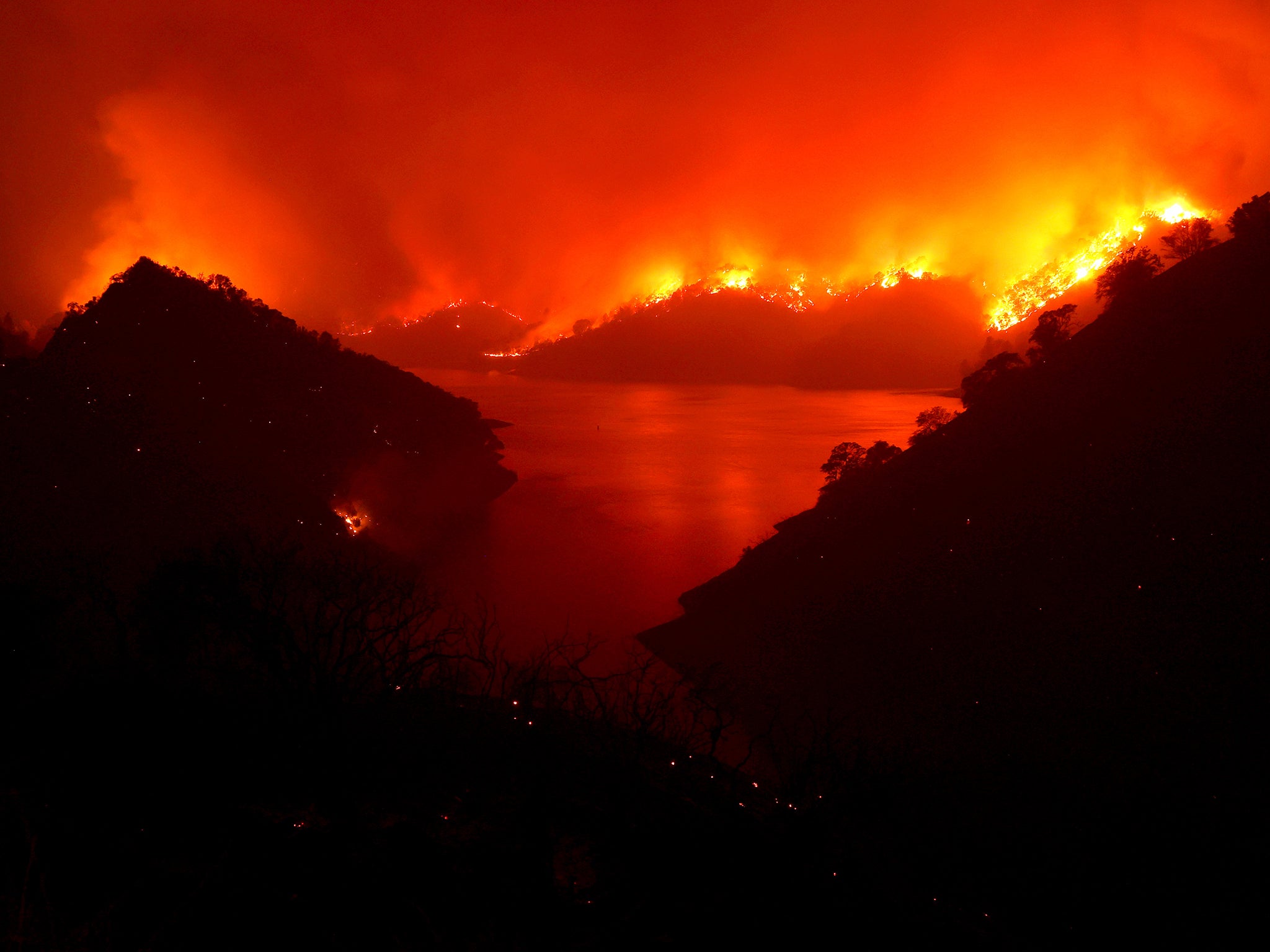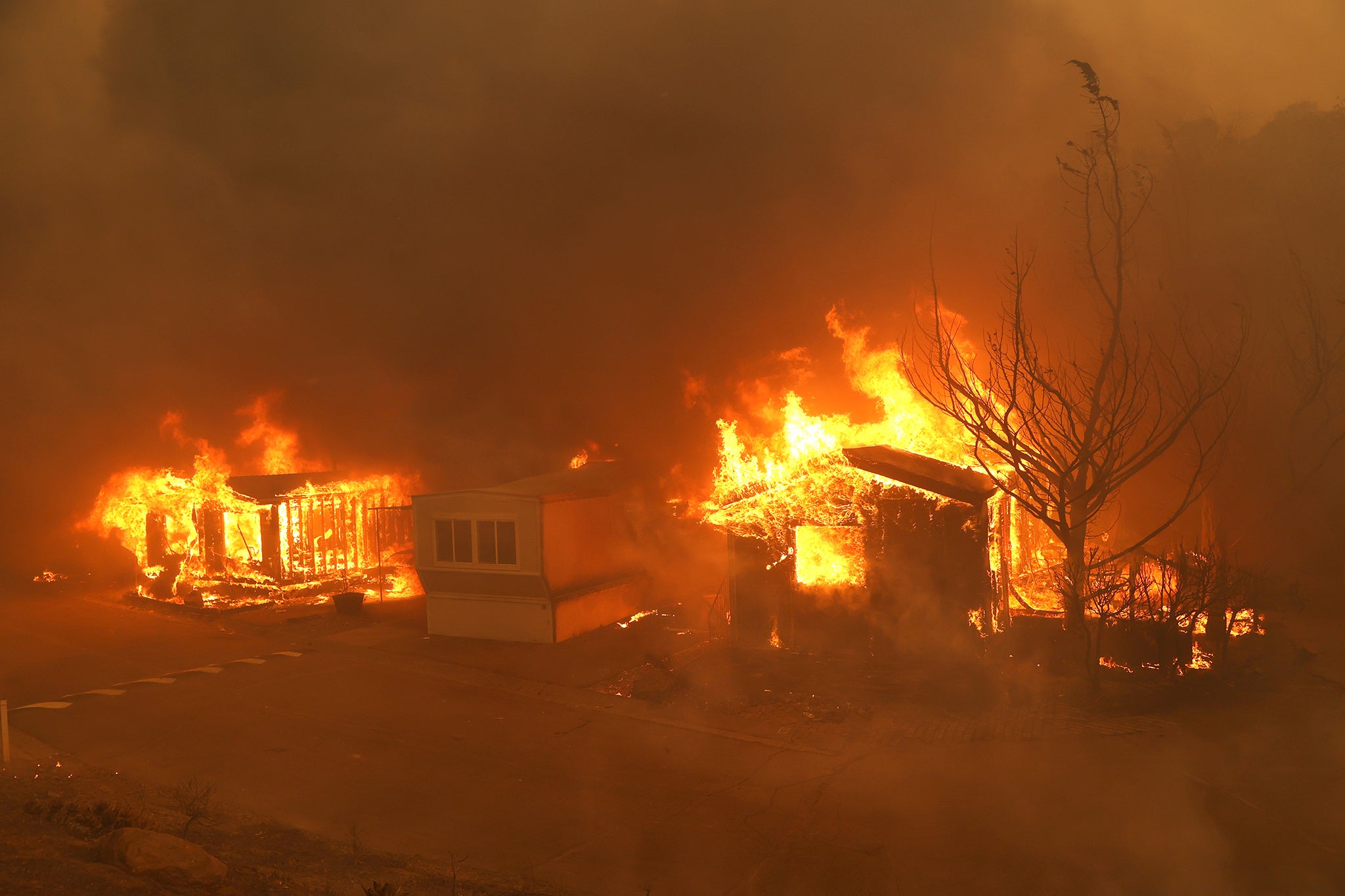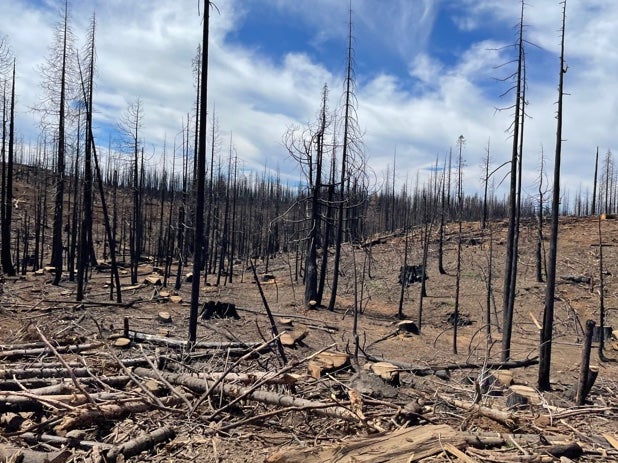How to catch a firestarter
When a single spark can lead to untold destruction, it’s more urgent than ever to track down the criminals starting wildfires. In California, Louise Boyle talks with an expert to find out what really makes an arsonist


Your support helps us to tell the story
From reproductive rights to climate change to Big Tech, The Independent is on the ground when the story is developing. Whether it's investigating the financials of Elon Musk's pro-Trump PAC or producing our latest documentary, 'The A Word', which shines a light on the American women fighting for reproductive rights, we know how important it is to parse out the facts from the messaging.
At such a critical moment in US history, we need reporters on the ground. Your donation allows us to keep sending journalists to speak to both sides of the story.
The Independent is trusted by Americans across the entire political spectrum. And unlike many other quality news outlets, we choose not to lock Americans out of our reporting and analysis with paywalls. We believe quality journalism should be available to everyone, paid for by those who can afford it.
Your support makes all the difference.In Pacific Palisades, a ritzy Los Angeles neighbourhood popular with celebrities such as Ben Affleck and Kate Hudson, a wildfire swept through more than 1,000 acres last month, leading to mandatory evacuations for hundreds of residents.
It took water-dropping helicopters and 540 firefighters battling on the ground some 48 hours to get the blaze under control.
How did it start? Helicopter pilots saw a man lighting the fires and determined the cause to be arson. Ramon Santos Rodriguez, 48, was later charged.
In the Palisades blaze, firefighters’ efforts were aided by a stroke of luck due to the cool and damp conditions. They aren’t always so lucky.
Arson was behind the Markley fire last August, which merged into the six-week Lightning Complex, the fourth-largest wildfire ever recorded in California, killing two people. A 29-year-old man was charged with arson and murder after police alleged that he used the fire to cover up the murder of a woman he had been dating.
Less than 10 per cent of wildland fires are caused by arson – the criminal act of deliberately setting a fire. The other 90 per cent are due to lightning strikes and other human activity such as equipment failures, vehicles or reckless behaviour. However, as wildfires increasingly claim dozens of lives, and destroy millions of acres, the impetus to catch those behind the crimes has taken on a new urgency.
That’s where criminal profilers such as Ed Nordskog step in.
Mr Nordskog has spent two decades as an investigator with the LA County Sheriff on the largest and busiest arson-bomb squad in the world. He has investigated 2,000 cases, including 44 serial arsonists, and published books on the subject, including a recent one on wildland arson. He consults on cold cases and major arson cases in the US and around the world.
“The only person in the world who has the ability to cause as much damage as a nuclear bomb is a wildland arsonist,” he told The Independent. “They can burn half the state down with one match. A fire set on the right day is absolutely catastrophic.”
Arsonists have long been a feature of California’s landscape. Between 2005 and 2014, arsonists started about 2,100 fires in the state.

The Golden State looks set for another long and intense fire season after blazes ripped through 4.2 million acres and left 33 people dead in 2020. While conditions linked to the climate crisis are the driving force of larger and more erratic wildfires, on the ground it’s a complicated picture. California is also racing to cull heavy “fuel loads” – firefighter lingo for dried-out vegetation caused by decades of fire suppression.
Mr Nordskog has accumulated case histories on hundreds of arsonists and found there to be 35 sub-types of serial offenders. He believes that four to seven of those sub-types relate to wildland fires alone.
In the early days of the FBI, the profile for a serial arsonist was a white male, aged 18-34; somewhat of a loner with below-average IQ. Mr Nordskog says this is far from reality, particularly with serial arsonists.
They’re usually very angry at the world because of how their life turned out
In urban settings, arsonists are of all races, ages and genders. That said, in more than 90 per cent of wildland arson cases, the suspects are male. Race and ethnic background, however, hold little bearing.
“If there are arson fires on Native American tribal lands, First Nations in Canada or Aboriginal [land] in Australia, [arsonists] tend to be from those [groups],” Mr Nordskog said.
“In the US southwest, for example, more Hispanic men are involved in serial arson activity. It really has nothing to do with ethnicity, it just reflects the population in an area.”
Generally, he adds, “arsonists are arsonists, wherever you go.”
Across cultures, he says, arsonists are generally people who tend to stand out from the crowd. “When we arrest an arsonist it’s usually not a surprise to those who know them.”
In both urban and wildland arson, age does not factor either. Mr Nordskog says that a serial arsonist can remain one for their entire life, returning to set fires if triggered by personal events.
In some cases, urban arsonists are homeless, and at times suffering from mental health and substance abuse issues. They tend to set smaller fires at night, moving through areas on foot.
By comparison, wildland serial arsonists are more likely to have stable backgrounds, hold down a job, own a vehicle and be able drive.

Some are employed in rural areas, giving them a reason to be there, or at least to commute through. The remoteness and times of opportunity means that wildfire arson is more likely to be committed during the day, at perilous times of high temperatures and low humidity.
Among the sub-types of wildfire arsonist are those who commit “arson-for-profit”.
“Fire in every sense of the word is money,” Mr Nordskog says, pointing to the “fire camps” which pop up at every major wildfire disaster. Essentially small cities, these camps can provide jobs in everything from food preparation to massage services.
Mr Nordskog says there have been cases of civilian contractors who run heavy equipment companies starting fires to create demand for their services both during blazes and in the clean-up and rebuild.
A delicate subject is the persistent number of firefighter arsonists. Mr Nordskog says around 100 arrests of firefighter arsonists are made each year in the US, a number which hasn’t changed in nearly a century.
Firefighter arsonists can be broken down into further sub-types. Most common, he says, are those who fall under “arson for profit”.
“Some contract firefighters are only paid when they’re fighting fires,” he notes.
Among cases of firefighter-related arsonists, in 1995, 60-year-old Joy Glassman admitted to setting multiple fires in California’s Shasta Trinity National Forest to help her son make extra money as a seasonal firefighter.
“Among firefighters another subset is the hero or recognition complex,” Mr Nordskog says. “It’s the same sort of psychological thing as nurses or doctors who poison patients to bring them back to life.”
The arsonist decides how and when, and the target. If there’s a policeman or firefighter standing in the way, they’ll go somewhere else
The “hero arsonist” category also includes other members of law enforcement or those in a public role who might gain praise and recognition from discovering or putting out a fire.
The arson expert says that bad hiring and training, along with the culture of a firehouse, can lead to firefighter arsonists.
“Sometimes these people are told in the fire academy that it’s going to be a thrilling job, fighting fire every day. Or they hear likely exaggerated stories from older firefighters. That’s not the reality. The modern world is generally very fire-safe.
“It also has to do with supervision. If chiefs run their fire department like a clubhouse, you’re going to have problems – fighting, theft, disputes, arguments. Perhaps one or two people engaged in setting fires.”
In April, five volunteer fire fighters in Prince George’s County, Washington, were charged in connection with arson attacks. One suspect had failed a background check to become a firefighter. Authorities said the fires were set at four empty homes and no one was injured but the arsons were “for the purpose of responding to and extinguishing those fires”.
A misguided altruism can also be the motivation for firefighters who commit arson. “It’s rationalised as firefighters needing training or to get rid of unsafe properties,” Mr Nordskog says.
Read more of our Supporter Programme’s special reports
In 1982 a group of seven firefighters, police officers and others carried out an arson spree around Boston in what was believed to be the biggest arson attack in US history at the time. The group set 163 fires in 10 cities and towns over 10 months because they were angry at department budget cuts. The blazes injured 280 firefighters, leaving some permanently disabled, and caused $22m in property damage. The gang were sentenced to jail for between five and 60 years.
While profiles vary, Mr Nordskog said some character traits frequently surface when he interviews arsonists.
“With serial wildland arsonists, they’re usually very angry at the world because of how their life turned out and frustrated by their circumstances,” he said.
Apart from arsonists in it for financial gain, he said: “They also have a lot of anxiety. The most common thing I hear is [they] feel better after lighting a fire and get relief from it.”

Substance abuse issues with alcohol and drugs, particularly prescription drugs, also factor.
But Mr Nordskog says that one of the biggest myths around arson is that there is a sexual component to lighting fires.
“There are really no cases to document this,” he said. “Arson isn’t a sex crime.” He said arson investigators don’t even use the term “pyromaniac”, which refers to a person with an uncontrollable impulse to set fires.
The investigator did, however, highlight what he says is a little-known aspect of arson – the role of repressed sexual identity.
While sexual identity doesn’t make someone more or less likely to become an arsonist, it is “their frustration in dealing with it” that does, he says.
The profiler described arson investigations as “the most difficult crime scene” in criminal justice. Wildland serial arsonists can operate for decades without being caught.
“To figure out where a fire has started, it’s generally easy. Go to the furthest place that hasn’t burned, upwind,” he says.
At that spot is where the painstaking work begins as investigators comb the scorched earth looking for an item that could be as small as a match.
If any sort of mechanical device has been used to set the fire, there’s a higher chance of figuring out the culprit.

“It’s rare but it means a true serial arsonist, the worst of the worse, out to set big fires,” Mr Nordskog says.
“The device is the key to the case, like with a bomber. You catch bombers by their devices and if they leave DNA. To place the device, they may leave footprints and tire tracks. Those people can be caught through forensics.”
If an incendiary device is used in a wildland fire you have a 40 per cent chance your suspect is a firefighter, in law enforcement or a public official, he added.
Due to the difficulty of arson investigations, many deliberate wildfire cases go unsolved.
“It’s so hard to determine what causes a fire,” the investigator says. “If someone [uses] a ‘hot set’, it means they bend down, use a lighter and carry that lighter away. Odds of us catching that person are really small.”
However, arson investigation techniques are becoming increasingly sophisticated, making prosecutors more likely to take cases due to a higher chance of conviction.
But arson is a non-preventable crime, Mr Nordskog says, so catching culprits is essential, particularly in light of the large-scale disasters wreaked by wildfire.
“It’s a predatory crime. The arsonist decides how, and when, and the target. If there’s a policeman or firefighter standing in the way, they’ll go somewhere else. There are unlimited targets. You can’t have patrolman looking around for arsonists,” he said.
“With that in mind, the best way to deal with the actual crime of arson is to arrest arsonists, because studies have shown that arsonists tend to be repeat offenders. Catch them, prosecute and lock them up so they cannot set any more fires.”

